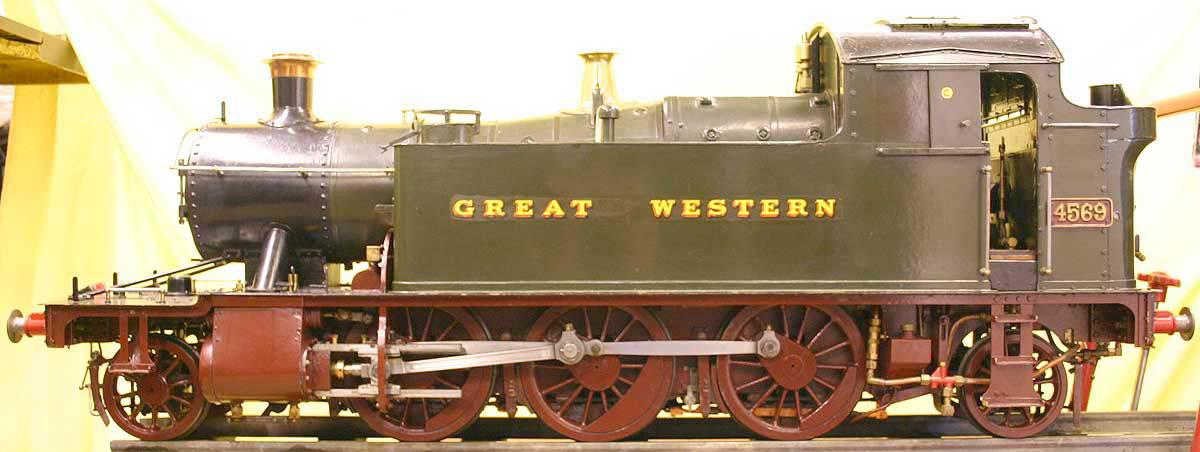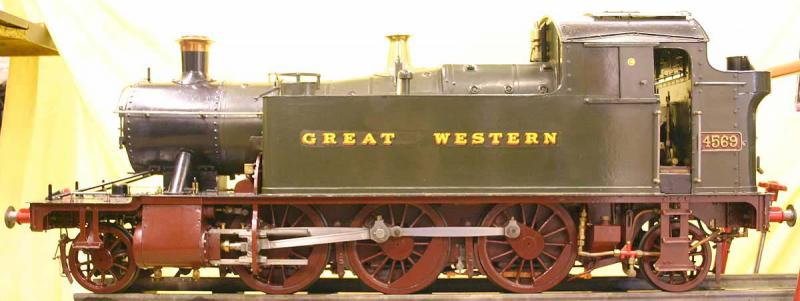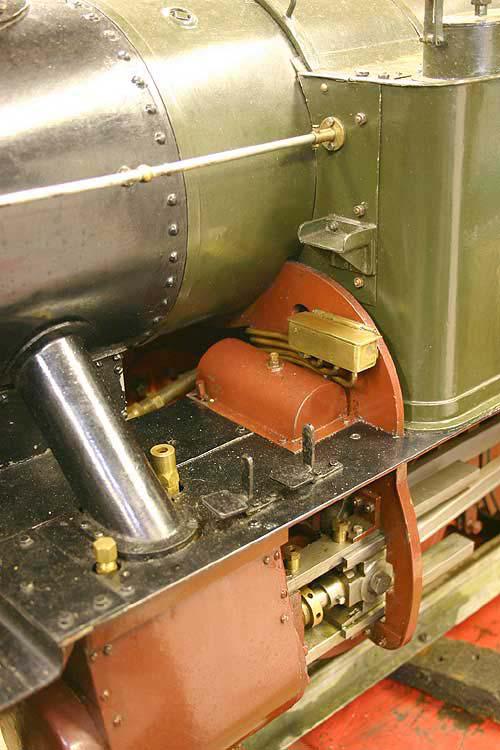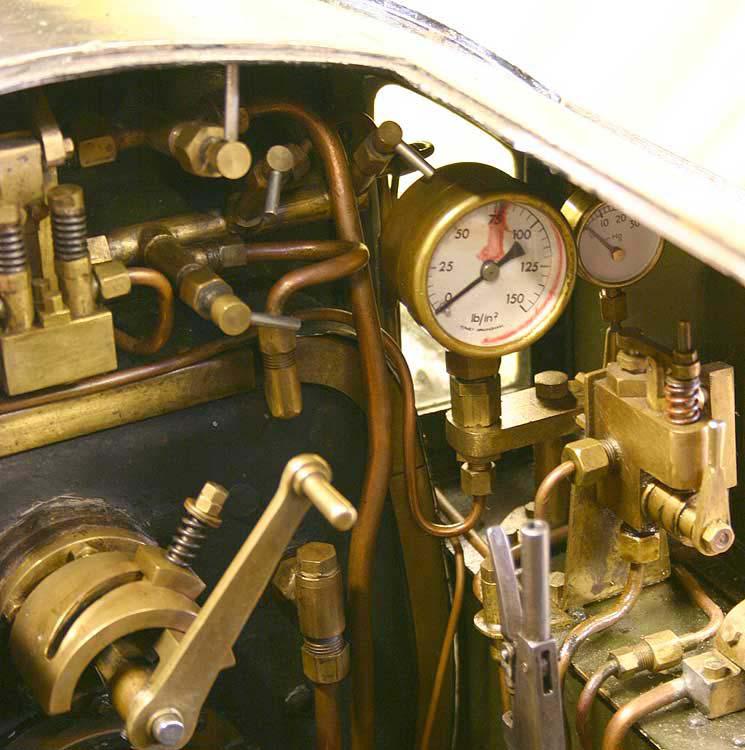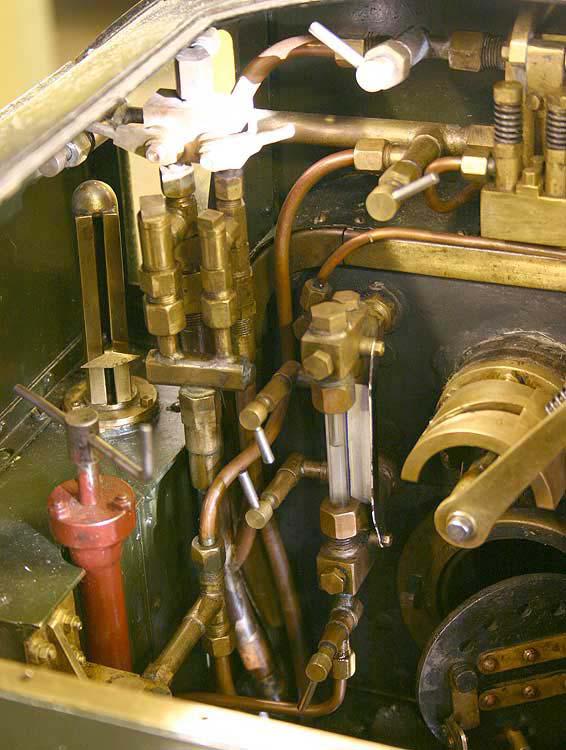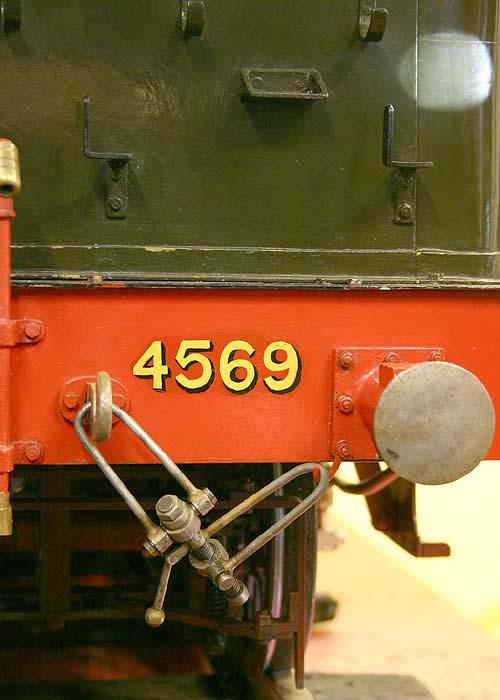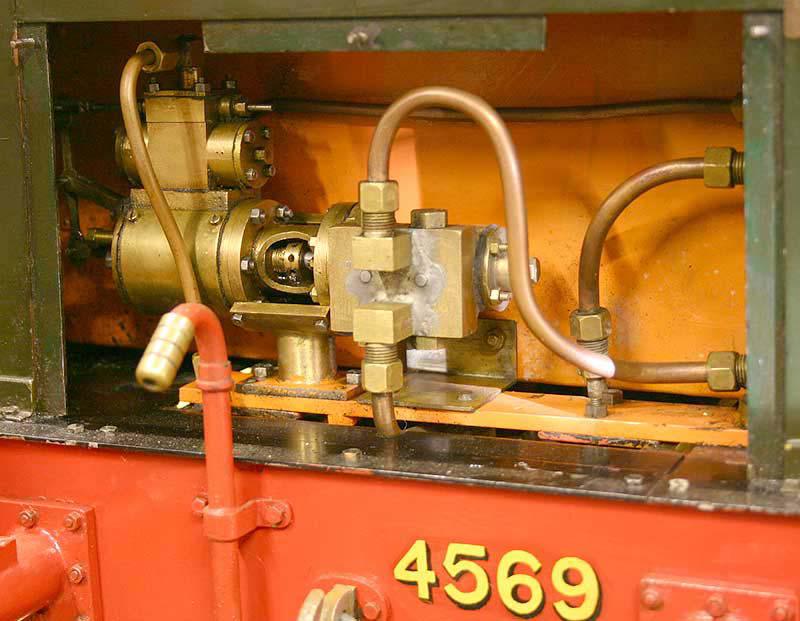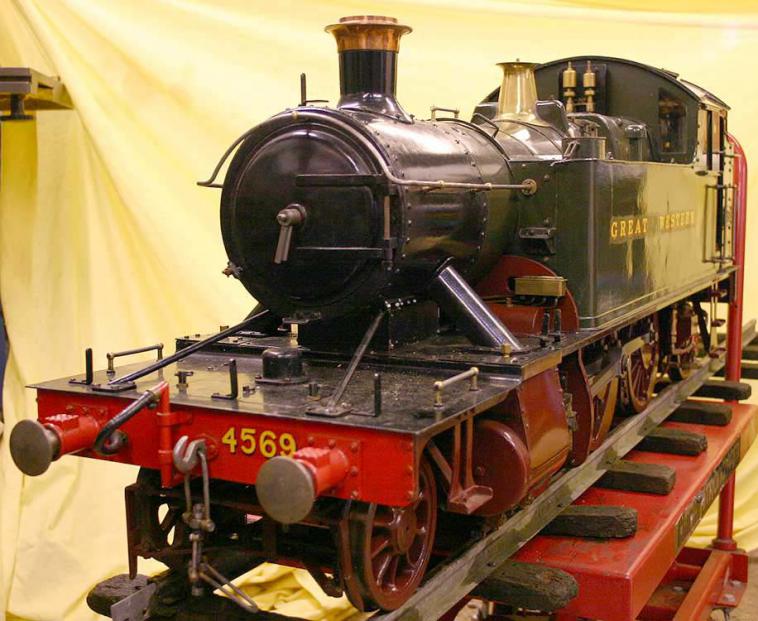Sold December 2003 Back to Archive
7 1/4 inch gauge Prairie - stock code 2126
A well-engineered model of Churchward's 1906 small Praire design for the Great Western Railway, the originals were built at the Swindon Works between 1909 and 1929 with several having survived into preservation. Churchward himself took over from Dean at the end of the nineteenth century and in his turn handed over to Collett in 1921. A lifelong railwayman, he retired to a railway-owned house in Swindon and regularly used to nip through a private gate and across the running line to visit the works. It was during one such visit whilst, allegedly, inspecting a loose rail joint that a combination of misty weather and his deafness contributed to his death beneath the Paddington-Fishguard express. Sic transit gloria mundi.
I ran this engine on Wednesday and have just got it back onto the bench this afternoon - why on earth they call them small Prairies is completely beyond me, it felt like about three tons.
Silver-soldered copper boiler with superheater fed by axle pump, twin injectors and steam donkey pump in the bunker. The donkey pump exhausts through a feed-water heater/condenser and sounds rather lovely running at low speed, squeezing a thimble-full of water into the boiler with every chuff.
Twin cylinder with piston valves actuated by Stephenson's valve gear with pole reverser in cab. Cab-operated draincocks. Mechanical and displacement lubricators. Axle box lubricators on running boards. Screwdown mechanical brake.
Now concentrate at the back, I'm only going to go through the backhead on this thing once. Starting in the middle there is a regulator, water gauge to the left with blowdown. Above the water gauge is the steam feed to donkey-pump mounted in the bunker, to the left are the steam valves for large and small vacuum ejectors. The top valve on the left hand side of the fountain (above the water gauge) is an ejector isolator. To the left of the water gauge is the steam feed valve for the hydrostatic lubricator. On the left hand side of the footplate is a level indicator for the bunker water tank and the screwdown locomotive brake. On the right of the fountain is the blower valve, with engine brake steam valve above and operating valves to the right, in front of the vacuum brake lever. On the right hand side of the cab is the pressure gauge and brake vacuum gauge. If you've ever flown a large commercial airliner or Concorde, you'll have no problem with this.
The paintwork is in fairly good condition but the actual colour scheme is a bit of a mystery. GWR Brunswick Green above the running boards is ok, the the Indian Red frames and wheels seems to hark back to an earlier era on the GWR. I won't make a definitive judgement on it as there were engines (notably 3440 "City of Truro", which is still with us) painted just so in 1903, only three years before the first of these Prairies appeared. I will leave it to a greater GWR authority than I to make a definitive ruling. What I can say is that the engine runs very well and feels like it could pull a house down!
Length 56 inches
Weight 500 pounds
| gauge | 7 1/4 inch |



